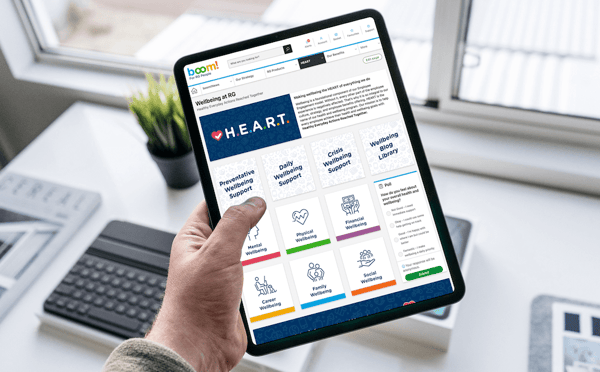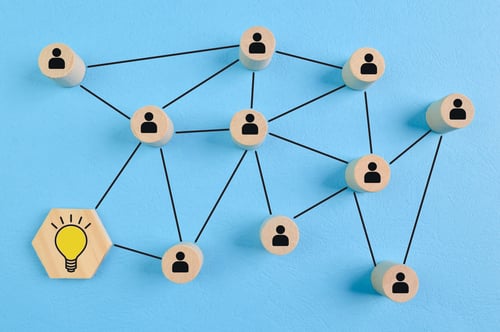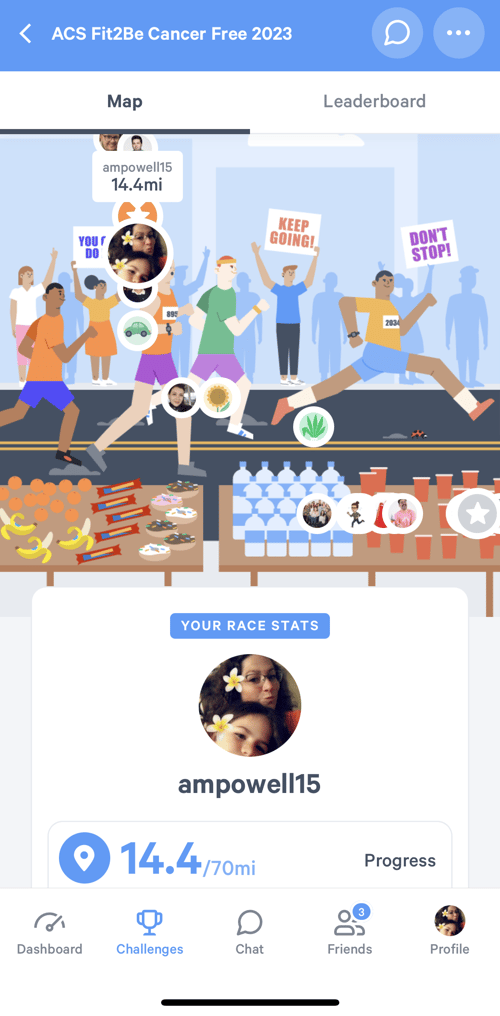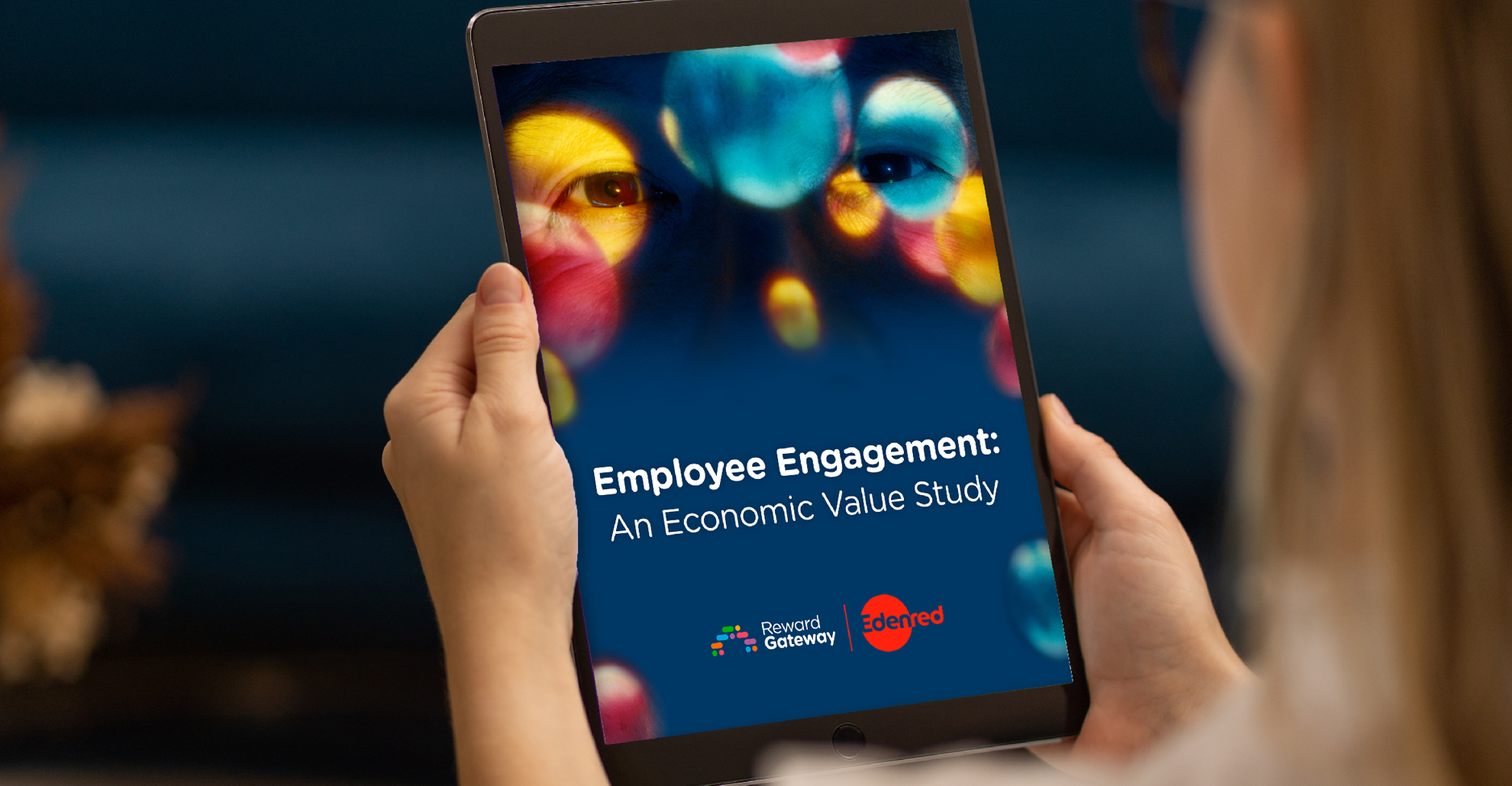There are lots of ways to support your individual wellbeing – getting enough sleep, taking time to exercise and focussing on a hobby you love, for example. There are as many strategies as there are people. However, there are a few strategies that the workplace is perfectly suited to support: Creating a culture of appreciation, gratitude and recognition for employees, and building connection within and between teams.
April was Stress Awareness Month across the globe, and here on the Reward Gateway blog, we talked about ways to observe at work, and how HR can support employee mental wellbeing all year round.
12th May – 21st May is Mental Health Awareness Week in the UK, so we’re keeping the wellbeing ball rolling (a little early) with more tips on helping your employees stay in tip-top shape.
1. Consistent appreciation
The field of positive psychology has been exploring the benefits of gratitude for decades, and the impacts to our mental and physical health are impressive. Do you and your team need to reduce stress and become more resilient? (Yes. The answer is ‘yes.’) Here are some ideas to build a culture of gratitude that will support happier people and better results:

- Start meetings with recognition. Ask people what they are grateful for. Taking the time for this will change the tone of the meeting and get people participating more actively.
- Ask, ‘What are you proud of?’ We are less likely to see our employees’ day-to-day actions than ever before. Ask them what they are proud of, so their personal victories will get recognised.
- Provide people tools to recognise each other. If leaders are the only ones driving recognition, you won’t build momentum. Make employee recognition tools easy and available for everyone to use.
- Make company recognition visible to all. If your team has a tough – or especially busy – week, give them the gift of recognition stories from across the company. This has the added benefit of building understanding and connection (see below).
2. Making it count: Recognise for wellbeing activities
I spoke with a nurse manager who shared that she recognises her team for taking their holiday and not checking in. She is trying to beat the ‘hustle culture’ in medicine that says you need to work harder to be valuable.
By acknowledging employees and other leaders that take time for themselves, she makes it clear that taking care of yourself is part of caring for others.
At Reward Gateway, we recently rolled out our HEART Hub to support our wellbeing. Our people team created a nomination form that allows RGers to share stories of colleagues who are living wellbeing in how they take care of themselves or others. Recognising employees for wellbeing actions doubles up on the benefits of appreciation!

3. Focus on social connections
After the isolation caused by the global pandemic, and in an age when many interactions have moved online, loneliness is on the rise. Amid these trends, research indicates that lack of connection can be more harmful than smoking and obesity. We are just wired to want to be together. Here are some strategies for connecting employees that will support their health and the effectiveness of teams:
 Add personal connection to agendas.
Add personal connection to agendas.
My team has spoken about how much time during the workday used to be spent greeting passersby, chatting as you get your coffee, or chatting as you wait for a meeting to start. For those working from home, it is important to make connections intentional at the start or end of meetings, because the only person I can talk to when I get my coffee is my dog.
Encourage one-on-one check-ins within and across teams.
I have a goal of setting up a weekly 30-minute connect with people I am less likely to work with on a daily basis. These connections are often as much about personal catch-ups as work, but they maintain my network in ways that make me more efficient in the work I do.
Don’t avoid (relationship-building) meetings.
No one likes days when you are running from one room (or weblink) to another – the pressure on your schedule can mean you want to cancel meetings with those you work with most. ‘We’re close, so they won’t mind me skipping.’ Instead, try switching tactical meetings into a shared document or email chain, and save the time for the people that matter most. For those relationship-building meetings, move your mindset from only-meet-if-necessary to meet-unless-necessary.
 4. Build community with wellbeing activities
4. Build community with wellbeing activities
Getting your team to connect about wellbeing topics can be healthy and fun. It can be simple as going to a team lunch at a vegetarian restaurant, or setting up a team chat for people to share what they are doing to take care of themselves. In the past, clients have put 30 minutes on the team calendar and challenged them to do something during that time for their wellbeing – the connection element? Have the team post a picture of what they choose to do in a team chat.
At Reward Gateway, we have the advantage of working with the team at MoveSpring, so we are all signed up for a virtual race to support the American Cancer Society.
It gives us a way to celebrate and support each other, encourages us all to get those steps in, and supports a cause we are passionate about!
Whether you are looking for ideas to build your personal wellbeing, boost the wellbeing of your team, or improve wellbeing across the company, chances are you can do so by increasing your focus on areas that have always been a part of your culture – recognition and connection. Now, I’m off to get my steps!
Subscribe to our blog to stay up to date on HR thought leadership and handy tips to improve employee engagement and wellbeing, strengthen your EVP and make your organisation a better place to work.

%20(1).jpeg) Alexandra Powell
Alexandra Powell



